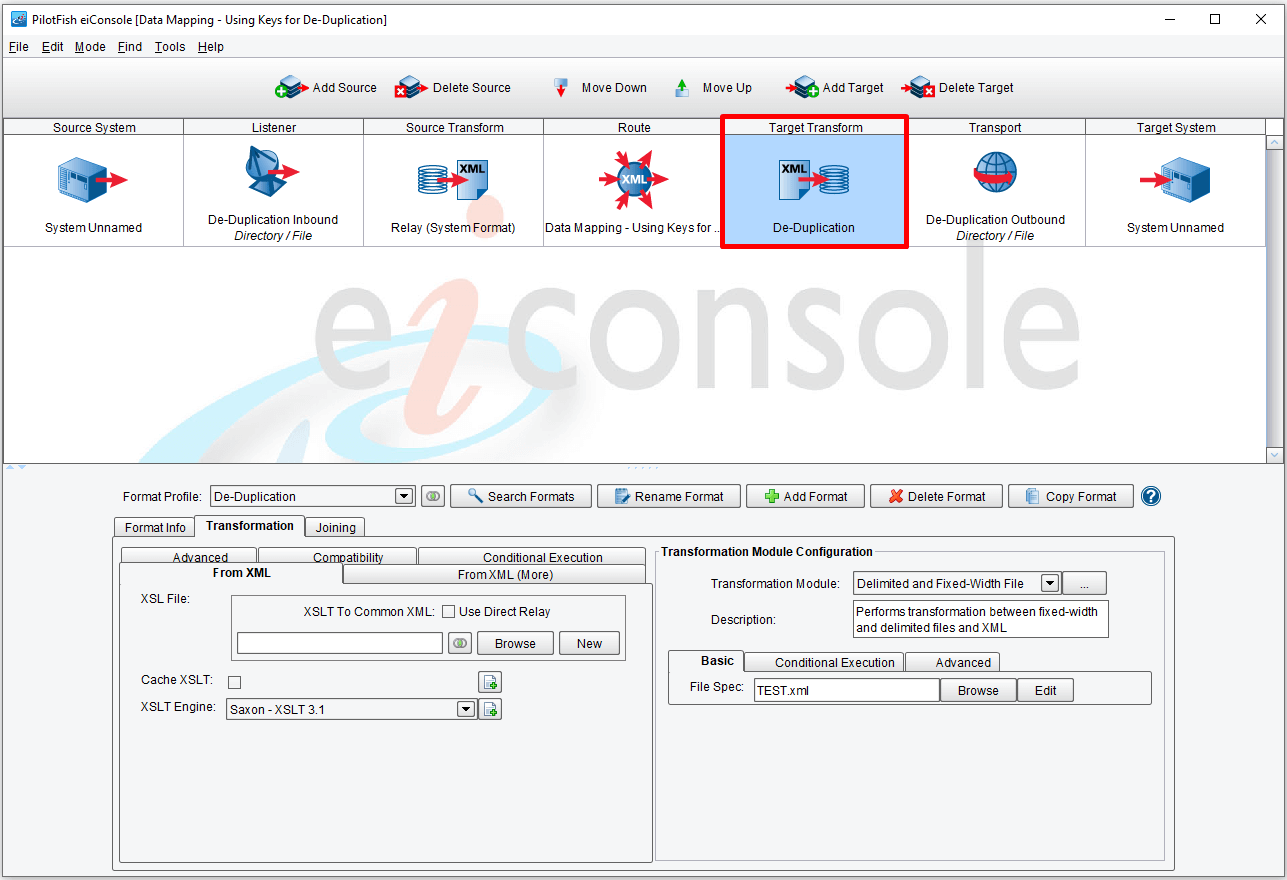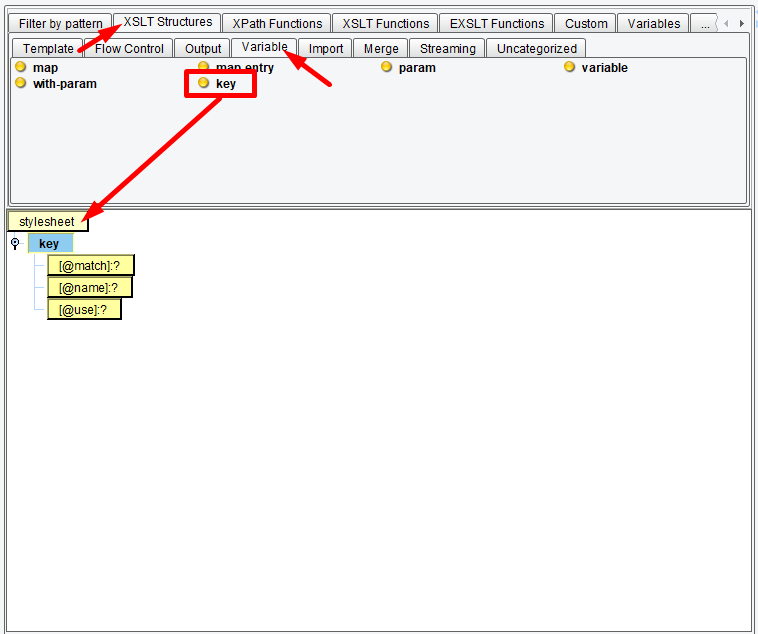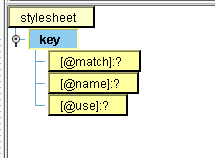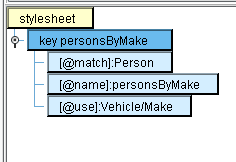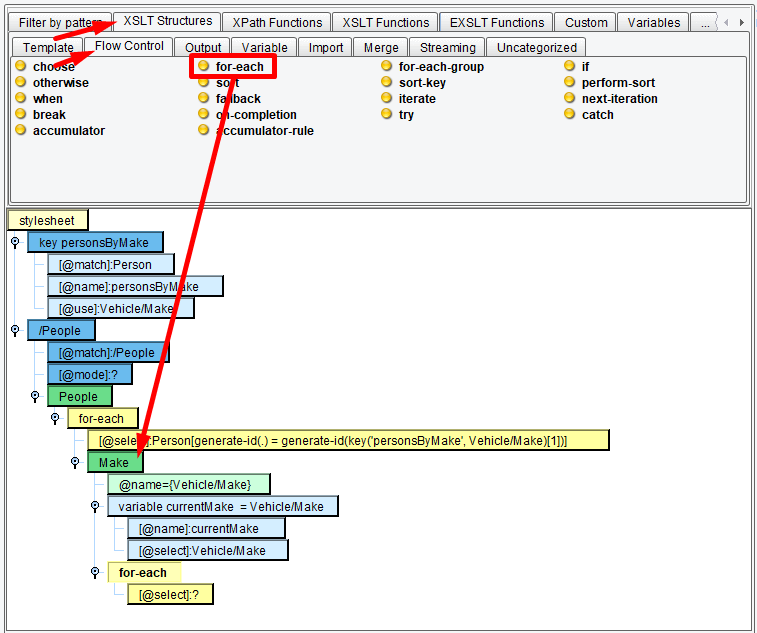eiConsole v.20R1
Using Keys for Deduplication in the Data Mapper
Overview
This interface and related tutorials demonstrate the use of the Data Mapper in Route configurations to transform between XML Formats. In this particular exercise, an existing Route (from “Data Mapping – Using Templates”) is modified to transform a “PeopleA” XML format to the “PeopleI” XML format. This mapping makes use of XSLT keys and the “Muenchian method” to perform deduplication during XSLT iteration. This tutorial expands on concepts covered in “Data Mapping Using Templates,” so users are expected to be familiar with that material.
How to Use This Example
Click the links below for the files you will need for this tutorial, then download the INTERFACE to get started. (Once logged into the eiConsole it immediately shows up in your “PIE” inbox for use.)
Note: if you are not logged in to the eiConsole, or have arrived at this page via a browser, you will be prompted to log in before the Interface downloads into your eiConsole “PIE” inbox. Or if you have not downloaded and installed a FREE eiConsole Trial you will have the opportunity to register after you click the Interface Download link. Once you are logged in the interface will automatically download into your “PIE” inbox. First, you’ll see a screen pop up indicating that a new product is ready for download. Select the Download Now button. Once you’ve downloaded the Interface you can drag it into your current Working Directory and begin.
Next, follow the tutorial and walk through it step-by-step. You may check your work against the provided Route (Sample Data).
Creating and Configuring a New Route
Click the “New” button to open the Data Mapper. Load in “PeopleA.xml” for the Source format and “PeopleI.xml” for the Target format:
The structure in the Target format is similar to the Source, except that Person elements are grouped under a “Make” element. Each such element represents a Vehicle Make. The goal for this mapping is to group Person elements according to their respective Vehicle Make elements. The intuitive, albeit incorrect, way of doing this would be to iterate over each Person or Make element from the Source and then iterate again for each matching Person. However, this would create duplicate groups, as each such Make might appear multiple times.
Using the “Muenchian Method”
The solution is to use something called the “Muenchian method,” which makes use of XSLT keys to iterate uniquely over some set of elements. Conceptually, this approach is somewhat complex, though it is too useful to ignore.
The first thing we’ll need to do is to create a “key.” XSLT keys are structures that are conceptually similar to the “Dictionary” in .NET languages (such as C#) or the “Map” in Java. A key is a collection of values “keyed” according to some other value. For example, if we were to create a key mapping “Gender” values to “Person” elements, we would have key entries for “Male” and “Female.” Each such key would point/map to a set of Person elements. Passing in “Male” to the key object (via the key function) would return the Person Node set.
For our case, our key will map the “Make” element to “Person” elements. Drag XSLT Structures → Variable → “key” onto the “stylesheet” element:
“match” is the expression we wish to match against and use as values in our key object. In our case, that will be “Person” elements. Modify the expression to read:
Person
“name” is the name of the key object we’ll use to reference it by later. Modify it to read:
personsByMake
“use” is the expression, relative to the “match” expression (each Person), to use as key entries. Modify it to read:
Vehicle/Make
Your key structure should now look like this:
Mapping our Basic Source and Target Root Elements
Next, we’ll wish to map our basic Source and Target root elements:
We’ll want to iterate over each Person in our Source, so provide the for-each expression and its initial expression:
Double-click on the “select” attribute to modify the for-each expression. Change it to read:
Person[generate-id(.) = generate-id(key('personsByMake', Vehicle/Make)[1])]
As expressions go, this one is obviously a bit complicated, so we’ll break it down. We’ve added a predicate to Person which tests if the results of the function “generate-id(.)” match the results of another such function. “generate-id()” returns a unique ID for the node passed as its argument. The XSLT specification provides no information as to the structure of that ID; only that it is unique for the given node in a particular XML document. That means that, within a given transform, values are unique, but should not be used outside of those purposes, as two unrelated Nodes in two disparate documents could share such an ID.
The second part of the expression is the “key” function called against our created key with the current Person’s “Make” as the key. This will return a node set containing each Person node with a matching Make element. We then use the “[1]” value to grab the first such node, guaranteed to be in document order. Finally, we get the ID of this node.
The result of all of this is a predicate which tests to see if a given Person is the first such Person with a given Make. Our for-each, therefore, iterates only once uniquely, for each Make. We’ve effectively managed deduplication as a result.
Mapping and Populating
Next, we can map “Make” from our Target onto the “for-each” and populate its “name” value with the Source “Make”:
{Vehicle/Make}
We can use the XSLT “copy-of” instruction and the current node as an argument to copy whatever Person we’re iterating over:

Finally, we can transform to see the results:
Keys and the Muenchian method can be extraordinarily useful for such circumstances, and while the syntax and concepts can be a little difficult to grasp, they are well worth learning.

